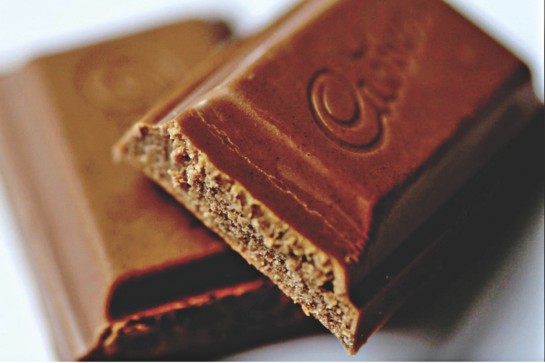Rural India develops taste for chocolate

Two years ago, Satish P, a bakery owner in the small village of Harohalli near Bengaluru, had his doubts about stocking Mondelez’s Cadbury Silk bars.
Priced between 70 and 170 rupees, they seemed out of reach for customers used to paying only 5 rupees for the tiny chocolates he has sold for years. But he took a chance and now rings up to 3,500 rupees ($50) in Silk bar sales a month.
“Villagers can afford premium chocolates now,” he said.
As Satish and other Harohalli shopkeepers have found chocolate sales in India are taking off, helped by growth in disposable incomes that extends to the country’s 650,000 poorer villages where more than two-thirds of the population reside.
A boom in e-commerce and a sharp tax cut are also propelling sales higher, spurring global confectioners like Mondelez International Inc, Nestle SA and relative newcomer Hershey Co to invest further in the still small but rapidly expanding market.
Illinois-based Mondelez, India’s No.1 chocolate maker, told Reuters “the big bulk” of a $150 million increase in global investment this year - the first hike in five years - will be in rural India.
The company, which first started providing Indian store owners with free display coolers in early 2000s, ramped up their distribution to rural areas over the last year. It now plans to be in about 75,000-100,000 villages in the next three years, up from 50,000 in 2018.
To that end, it is also expanding its fleet of refrigerated trucks and building a database that maps India’s small neighborhood stores and monitors sales of its products at those shops.
“There’s a misconception that rural consumers are poor. Not all of them are. There are rich farmers, who are coming into the consuming class,” Deepak Iyer, Mondelez’s managing director for India told Reuters.
Iyer said Mondelez was targeting villages with as few as 3,000 people. “There are families aspiring for premium products because they see them through mobile connectivity today.”
Mondelez CEO Dirk Van de Put said competitors will find it hard to match the firm’s scale in the country. Cadbury’s vast, decades-old distribution network in India was a key attraction for Kraft Food in its $19.6 billion takeover of the brand in 2010. Kraft later split into two firms with its global snacks business renamed Mondelez.
“It’s not going to be easy (for rivals) to carve out space, to be really be noticed in the store,” he said an interview, adding that Mondelez has consistently grown market share in India for several years.
Mondelez says it now commands 66 percent of the Indian chocolate market. Cadbury, a 195-year old British confectionery brand, entered India in 1948 and its Dairy Milk, Silk and 5Star products have since made it a household name. The Dairy Milk brand alone accounts for 40 percent of the market.
